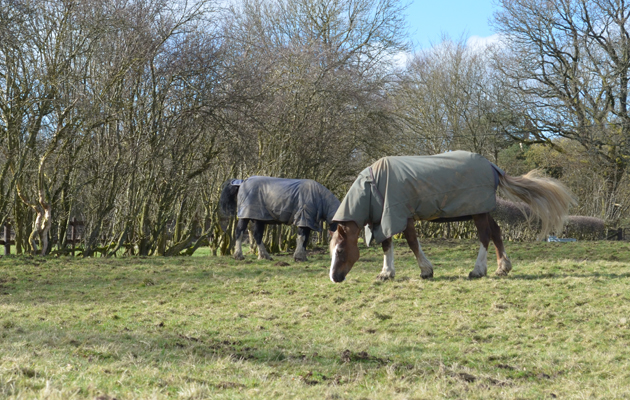Temperature taking and rugging up are in the research news, reports Peter Green MRCVS
Taking a horse’s temperature is a standard procedure, carried out when fever is suspected or to monitor the daily health of an elite equine athlete.
The time-honoured method is to insert a thermometer in the horse’s rectum and wait for a minute or so, before removing it to read the result. Some horses object to this, however, becoming stressed and putting handlers at risk. Skin temperature can be taken remotely with a thermal imaging camera, but this is not a reliable guide to genuine core temperature.
Vets in France were able to incorporate an accurate thermal sensor into a microchip and implant it in the crest of the neck.
These temperature-reading chips were implanted into 43 Anglo-Arab youngsters at a stud, when the foals were less than a year old. The foals were kept in same-sex groups in large barn, with access to an outside yard.
The chip readers were incorporated into the base of the water troughs, so that every time the youngsters came to drink, a temperature reading was logged. Readings were taken for three months, from December to February, over two winters. The rectal temperatures of 26 of the foals were also monitored with a standard thermometer.
The temperature-sensitive microchips performed brilliantly, logging temperatures to within a tenth of a degree Celsius and matching the rectal temperatures – confirming these chips could be useful in routine stable management.
There were more than 100,000 readings in total, with the accuracy and volume of the data gathered revealing further fascinating results.
The average temperature for all of the horses, at all times, was 37.5°C, but slightly higher for the males. The horses had clear daily temperature rhythms, with the lowest just before dawn and the highest at about 6pm – by almost a whole degree. As daylight length increased in spring, temperatures across the group went down by about a third of a degree.
Feeling the heat
Knowing a horse’s temperature without interfering with him may help in many ways, not least in deciding when some extra insulation might be welcome.
Vets in North Dakota, USA, investigated the effect of three different blanket weights on the skin temperature of horses during cold winter weather. They took four American stock horses with unclipped winter coats and used thermography to measure the temperature of the skin of the saddle area.
The outside air temperature was -23°C, with wind chill taking it down to -32°C. The four horses were put outside for an hour; three of them wore a full-body winter rug, without a neck cover, and the fourth was unrugged. The rugs were of different weights according to their fibrefill insulation and were sold as lightweight, mediumweight and heavyweight.
After an hour, the horses were brought back in and their skin temperatures were measured. The experiment was repeated until each horse had worn each rug and had also been outside unrugged.
It was clear from the results that when a horse had no rug on, he got cold quite quickly. Wearing rugs did keep the horses warmer, but the lightweight one had only a tiny effect and was not really worthwhile. While the medium and heavyweight rugs did work, it was interesting that even at such extremely low temperatures there was little difference between them in terms of performance.
Temperature chips: Journal of Equine Veterinary Science 86, 102 892-898
Effect of rugs: Journal of Equine Veterinary Science 85, 102 848-851
Ref Horse & Hound; 19 March 2020

